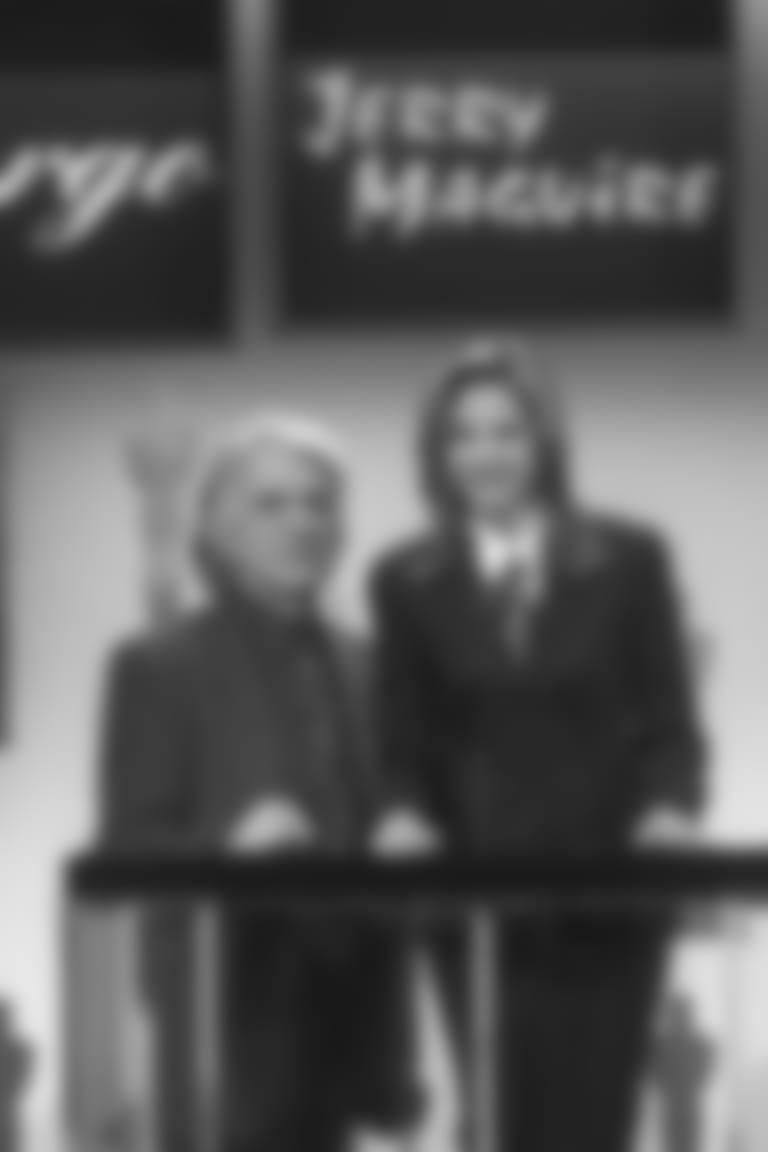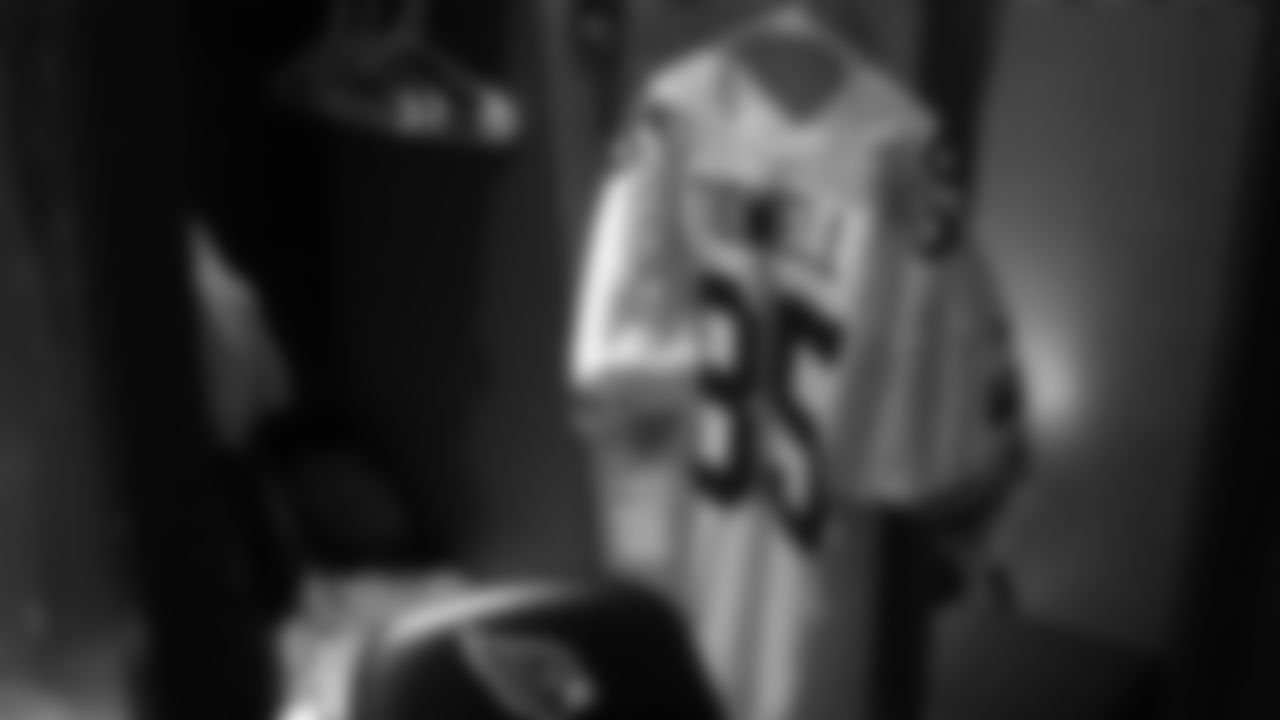Tim McDonald was fed up.
After multiple free agent visits in 1993, the Cardinals All-Pro safety had been promised lots of things by lots of teams, but had yet to nail down a contract offer commensurate with his worth.
At the owners meetings in Palm Springs, California in late March, McDonald vented his dissatisfaction to Cameron Crowe, a burgeoning screenwriter who was tagging along for background on a movie he planned to shoot down the road.
"I had taken a trip to Tampa, and I had taken a trip to Philadelphia to meet their organizations," McDonald said earlier this year from his home in Rancho Cucamonga, California. "I remember being a little frustrated having to go through all this process, and wanting to get it over real quick.
"I remember talking to my agent (Leigh Steinberg) and telling him, 'Hey, I don't want to do too many more of these trips. Let's get this thing done. At some point in time, someone needs to show me some money.'"
McDonald swears the phrase was not a big deal at the time. He eventually did get the contract he wanted, signing with the 49ers for five years and $12.75 million.
More notably, Crowe latched on to those words and, after a slight tweak, turned it into cinematic gold. A quarter century later, it's impossible to hear 'Show Me The Money' without immediately picturing Cuba Gooding Jr. and Tom Cruise repeating it back to one another at increasingly strong decibels.
McDonald had no idea what he started, but chuckles softly at his indelible contribution to the Hollywood blockbuster, Jerry Maguire.
"Cameron Crowe was really good to talk to, and he asked a lot of questions about the process," McDonald said. "I kept wondering in my mind, 'What kind of movie is this?' Free agency didn't sound like much. It was kind of surprising. It was kind of different. But to see the movie, once it came out, it all made sense to me what he was doing and how he put it together."
After it hit theaters in 1996, 'Jerry Maguire' became one of the most memorable movies of all-time, as the story about an NFL agent (Cruise) and his client (Gooding) grossed more than $273 million and earned Gooding, Jr. a Best Supporting Actor nod at the Academy Awards.
Such smashing success was unknown in the years prior, but McDonald agreed to go along for the ride, as did his former organization.
Gooding's character, Rod Tidwell, played wide receiver for the Cardinals, and the team allowed Crowe – who declined an interview for this story – to use its practice facility to shoot many scenes.
The famous 'Help me, help you' conversation between Cruise and Gooding took place in the bathroom and locker room in Tempe.
Former Cardinals defensive end Bertrand Berry recognized the setup during his free agent trip to the facility in 2004 and later found himself re-enacting the scene after signing.
"When I saw it, I just couldn't believe how true to life it was," Berry said. "I thought that maybe they had generated a locker room. I knew that it was set in Phoenix, and it was the Cardinals and all that stuff, but it was as true to life as it could possibly be."
The Cardinals' practices were often held on the same days as the movie production, but generally at different times. However, former Cardinals wide receiver Frank Sanders said there were moments when he ran into the actors.
"I'm sitting in my locker room, and I'm walking back toward the restroom area, shower area, hot tub area, and I can see that Tom's in there," Sanders said. "Tom Cruise's name is much bigger than his height, and I didn't think that was him. But I knew it was him based on his hair and his style.
"He looked and said, 'Hey.' He just kind of washed his hands and turned and went the other way out. I guess seeing a star is like seeing a shooting star. You wish upon it and then you just don't get that wish. That's kind of what it felt like to me to watch him come in, and then go out the other way."
Game footage from the Cardinals' Christmas Night clash against the Cowboys in 1995 was used in the movie, and the production crew shot other scenes that evening.
"We're running out for the start of the game," said former Cardinals receiver Anthony Edwards. "We run out and I see this number 85. And I know that's not Rob Moore, and this guy's running out with us. And in my mind, I'm thinking, like, 'Who is this guy?'"
Gooding, Jr. had yet to be cast as Tidwell, but the producers got the shots they needed, including the iconic touchdown scene in the south end zone of Sun Devil Stadium at intermission.
"We're playing a game and they came in and said, 'Hey, halftime is going to be a little longer than usual, because they've got to shoot a segment when they're in the end zone,'" Sanders said. "The spin. And then when you're coming back out of the tunnel, you're seeing cameras and people walk by you."
More production took place at the facility in the spring of 1996, but was nearly postponed because Gooding sprained his knee on the first day of filming.
"We got him off the field with a cart," said John Omohundro, the Cardinals' trainer at the time. "He came in and got over there on Table No. 2. We give him first aid, and he says, 'I can't believe I hurt my knee.' I said, 'Well, you're going for authenticity.'"
In the midst of Gooding's treatment, a producer had him stand up and re-enter the room so the crew could film it. The audio engineers had previously shut off the ice machine because it was too loud during scenes, and it had to be turned back on so Omohundro could tend to Gooding.
"We had our little moments of crisis that we had to iron out," Omohundro said with a laugh.













